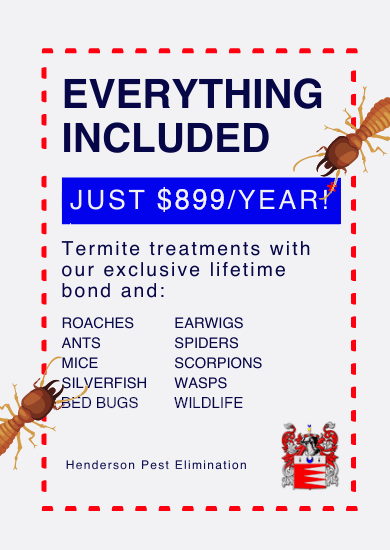- American Cockroach
- Australian Cockroach
- German Cockroach
- Woods Roach
- Asian Termite
- Drywood Termite
- Formosan Termite
- Subterranean Termite
- Fire Ant
- House Ant
- Crazy Ant
- Pharaoh Ant
- Ghost Ant
- Black Widow
- Brown Recluse
- Wolf Spider
- Scorpion
- Mouse
- Centipede
- Earwig
- Roly Poly
- Silverfish
- Ticks
- Cricket
- Gnat
- House Fly
- Asian Tiger Mosquito
Common Florida Pests

Periplaneta americana (L.)
What is An American Cockroach?The American cockroach is the largest of the house-infesting roaches and a major pest in the United States. It’s also commonly known as the water bug, the Bombay canary or the palmetto bug. Despite its name, the American cockroach is not native to North America and some evidence suggested that American cockroaches were introduced via ships from Africa in the early 1600s.

Periplaneta australasiae Fabricius
The Australian cockroach is one of several species of peridomestic cockroaches (cockroaches that live mostly outdoors, but occasionally may be found indoors) and the most common cockroach species found outdoors in southern Florida. This species resembles the American cockroach but can be distinguished by the presence of light yellow bands on upper margins of the forewings.

Blattella germanica (Linnaeus)
The German cockroach is the most common cockroach species found worldwide. While German cockroach infestations occur in a variety of human occupied spaces, they are most often associated with restaurants, food processing facilities, hotels, nursing homes and other institutional facilities. Keep reading to learn more facts and to get information on German cockroach control.

Parcoblatta
This roach looks somewhat like the common German cockroach, though the degree of similarity depends on the species as their appearance varies. Examining their behavior is the best way to tell the difference between the wood roach and the household roach. Wood cockroaches aren’t sensitive to light, so you can see them day or night. They aren’t skittish and are less likely to scurry away when you approach. Additionally, they will wander around your house without gathering in any particular area.
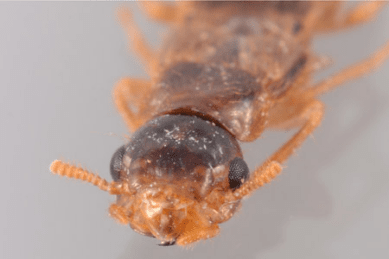
Coptotermes gestroi
Asian Termites or Coptotermes gestroi is a very damaging termite and a threat to wooden structures wherever it occurs. As one might expect, Coptotermes gestroi is similar in many respects to Coptotermes formosanus Shiraki, the Formosan subterranean termite.

Cryptotermes cavifrons Banks
Termites of the genus Cryptotermes were sometimes called powderpost termites because of the telltale heaps of fecal pellets (frass) that accumulate beneath infested wood. Fecal pellets of Cryptotermes, however, are similar in size and shape to other comparably sized species of Kalotermitidae. All are now collectively known as drywood termites.

Coptotermes formosanus Shiraki
Formosan termites are a subterranean species of termite with three distinct castes: alates (or reproductive), soldiers and workers. Often referred to as “super termites,” they are the most voracious, aggressive and devious of over 2,000 termite species known to science, chewing through wood, flooring and even wallpaper undetected.

Family Rhinotermitidae
Subterranean termites can cause the most damage of any termite species. These termites build distinctive tunnels, often referred to as “mud tubes,” to reach food sources and protect themselves from open air. They eat wood 24 hours a day, seven days a week, using their saw-toothed jaws to bite off small fragments of wood one piece at a time. Over time, subterranean termites can critically damage a building structure, sometimes causing a total collapse.

Solenopsis invicta
Red imported fire ants (RIFAs, for short) get their common name from their ability to inflict painful bites and stings. These dark reddish-brown ants are an invasive species found throughout the southern part of the U.S. Keep reading to learn more red ant facts, including information on red ant bites and more.
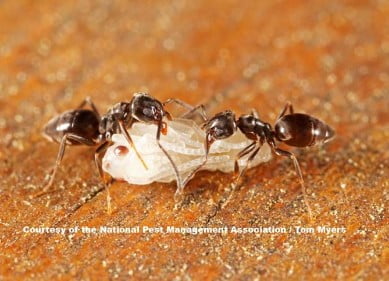
Odorous house ants are dark brown to black in color and range in size from 1/16-1/8 inch. This species is found in all regions of the United States. Typically living for several years, odorous house ants are known to make their homes in exposed soil. They also nest in walls cracks and under floors inside homes. Odorous house ants get their name from the strong, rotten, coconut-like smell they give off when crushed.

Paratrechina longicornis (Latreille)
Longhorn crazy ants get their common name from the workers’ habit of running in an erratic, jerky manner when searching for food. Longhorn crazy ants are opportunistic scavengers that will feed on a range of items including live and dead insects, seeds, fruits and honeydew. Foragers may enter homes in search of food and moisture, particularly during the cooler fall and winter months when natural food sources are scarce.
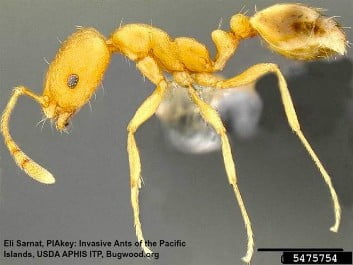
Monomorium pharaonis (Linnaeus)
Pharaoh ants get their name from the mistaken belief that they were one of the plagues of Egypt during the time of Pharaohs. This species is thought to be native to Africa, but is currently found throughout the Unites States. Colonies of Pharaoh ants tend to be large, with workers numbering in the thousands. If disturbed, members of the colony will migrate to new locations to establish several new colonies through a process called budding.

Tapinoma melanocephalum (Fabricus)
Ghost ants get their common name from the fact that they are very hard to see due to their pale color and tiny size. They are a tropical species, probably of African or Asian origin. In the United States, ghost ants are found primarily in central and southern Florida and Hawaii. This type of ant is unable to survive in the northern states except in greenhouses and heated spaces.

Lactrodectus mactans
Black widow spiders get their common name from the popular belief that the female eats the male after mating, a phenomenon which rarely happens in nature. These spiders can be found worldwide with five species established in the United States and are most recognized for the red hourglass shape on the underside of their abdomen. Although fatalities are rare, the black widow’s venom is reported to be 15 times stronger than a rattlesnake’s and can cause muscle aches and nausea, as well as make breathing difficult.

Loxosceles reclusa
The brown recluse or fiddleback/violin spider gets its common names from its coloration and reclusive habits, or the dark violin/fiddle-shaped marking on the top of its chest. Brown recluse spiders are found in southern Europe, temperate Africa, and in North, Central, and South America. In the United States, brown recluse spiders are found predominantly in the Midwest and Southeast.

Lycosa
Unlike most spiders, wolf spiders don’t hunt with webs. Instead, they chase their prey using their fast running ability. These spiders are often big and hairy which alarms some people, but they are primarily nuisance pests. Over 100 species of wolf spiders are found in the United States and Canada.

Centruroides hentzi
Scorpions vary in size from one to four inches long. These crab-like animals are dark brown, have a broad flattened body, and ten legs. The front pair of legs is modified into claw-like pincers which are used to hold their prey. A scorpion’s most noticeable feature is their curled fleshy tail. It is usually held over their body. The scorpion tail ends in an enlarged upturned tip that ends in a stinger. The sting is used for defense as well as for capturing prey.
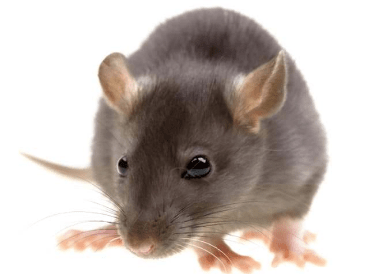
Rattus rattus
The roof rat is the smaller of the two commensal rats, as the Norway rat is larger in size. Roof rats are also referred to as black rats or ship rats. The roof rat gets its name from its tendency to find shelter in the upper parts of buildings. Once inside, roof rats not only damage materials by gnawing through them, but they also contaminate stored food and serve as vectors of dangerous diseases.

Mus domesticus
The house mouse is the most commonly encountered and economically important of the commensal rodents. House mice are of Central Asian origin, but they are distributed worldwide and can be found throughout the United States. House mice are not only a nuisance, but they can pose significant health and property threats. House mice breed rapidly and can adapt quickly to changing conditions. In fact, a female house mouse can give birth to a half dozen babies every three weeks and can produce up to 35 young per year.
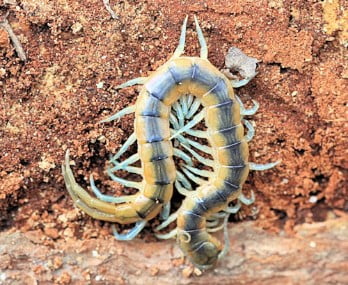
Hemiscolopendra marginata
The Florida Blue Centipede is likely the only true centipede native to Florida. Unlike millipedes, centipedes are aggressive carnivores that eat insects, worms, snails, – essentially any other creature small enough for them to overpower and consume. They are nocturnal and prefer dark, moist areas.
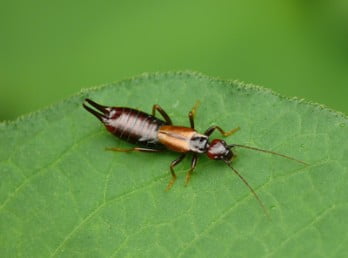
Dermaptera
While they don’t cause harm to humans, their characteristic pincers make these pests look terrifying. There are thousands of species, but you’ll know if you’ve got earwigs if their pincers are attached to the rear of their abdomen. And contrary to popular belief, they do not lay eggs in your ear and eat your brain. Any small insect can get stuck in your ear, but earwigs do not intentionally seek out humans for this purpose, so you can rest easy.

Siphonaptera
Fleas are small, flightless parasites that feed on the blood of various warm-blooded animals, depending on the species, and can transmit diseases to their host. Although most people think of fleas as a problem only the family pet has to deal with, they can also bite humans and are the most common transmitter of the rare bubonic plague. While pet owners are primarily at risk for flea infestations, these biting pests can also be brought onto a property via wild animals like raccoons or skunks and then make their way into a home.

Blattella germanica (Linnaeus)
Often known as roly-polies, pillbugs are able to roll up into a tight ball when disturbed or threatened. They are easily recognized by their back, which is made up of seven hard individual plates.
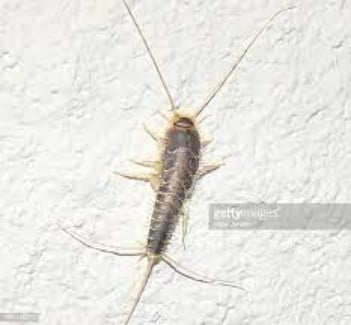
Blattella germanica (Linnaeus)
Silverfish are one of the top Florida pests in winter. They’re attracted to damp spaces and cluttered areas. This often means you’ll find them in basements, bathrooms, attics, and garages. They can cause damage to clothing, paper (including books), wallpaper, carpet, and food, among other things.

Ixodida
Ticks are often mistaken for insects, but they are actually arachnids. Regarding tick identification, they are classified into two categories: soft ticks and hard ticks. Soft ticks often feed on bats and birds, while hard ticks feed on humans, pets and nuisance wildlife. Regardless, if you are dealing with an infestation, the removal of ticks from your property should be handled by a professional exterminator. A professional can help you in identifying the type of ticks you are dealing with and the safest and most efficient process for tick removal.

Scapteriscus borellia Giglio-Tos
Mole crickets are active year-around in Florida, but do the most damage during spring (March through June) or fall (late August to early October) when they are mostly adults. Mole crickets have one generation per year, with eggs typically being laid in April and May. Not only can mole crickets tunnel through the soil, but the adults can also fly long distances.
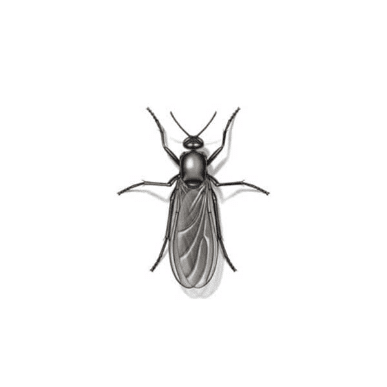
Sciaridae
Gnats and midges are common names for a large number of small, non-biting flies found throughout the United States. These flies typically breed in aquatic environments and can emerge from these sources in high numbers. Most species that affect homes and buildings are nighttime fliers that are attracted to the light on buildings. People are often troubled by the presence of these insects as they confuse them with mosquitoes. However, unlike mosquitoes, midges and gnats lack a biting needle, and because of this, they cannot spread disease.
Musca domestica
Non-biting flies, such as houseflies, are not only nuisance pests, but they are also responsible for transmitting diseases and contaminating food. For instance, flies are capable of contaminating food and transferring more than 100 pathogens, including malaria, salmonella and tuberculosis. Food contamination is one of the main reasons that fly pest control is so important.
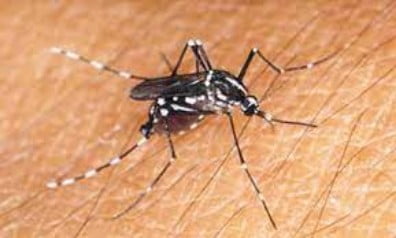
Aedes albopictus
The first discovery of the Aedes Albopictus, or Asian tiger mosquito, in Florida was in Jacksonville in 1986. … The species has spread rapidly since its arrival, including all 67 counties in Florida and right on up the east coast of the United States.










